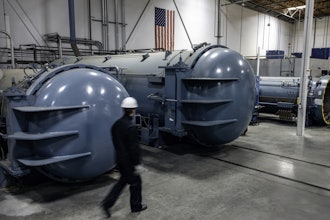Since the introduction of 3D printing (additive manufacturing) in the 1980s, the benefits of producing small quantities of complex parts fast is well understood among manufacturing circles. Despite this, the industry is just beginning to understand exactly how transformative the technology will be to the future of manufacturing. As the technology becomes more sophisticated with the onset of new IT capabilities, and as acceptance and familiarity grows among mold manufacturers, the additional benefits will further reveal themselves.
The following are the top five benefits of additive manufacturing that highlight where the technology is taking us today.
1. Freedom to design and innovate without penalties
If there is one thing product engineers can count on, it’s modifications and redesigns; and it is one of the most important aspects of designing. Additive manufacturing is no longer just about the physical creation of a part. It brings design and innovation to the forefront. Having this creative freedom in the production process, without time or cost penalties, is the ultimate advantage over traditional manufacturing. This is especially true when you consider that over 60 percent of designs submitted for tooling are modified while in production. In traditional manufacturing, this can quickly lead to significant increases in cost and time delays. Additive manufacturing mitigates this through the movement away from static designs while enabling engineers to try multiple iterations simultaneously with minimal additional costs.
Companies do not have to tolerate design flaws that come with amortizing the cost of the tool before starting over. This freedom to design and innovate without penalties yields big rewards: compressed production schedules, better products, more product designs and ultimately, more products.
2. Increased supply chain proficiency with ‘3D faxing’
Think faxing is a technology of the past: think again. In the additive manufacturing world, it is the future and it has huge implications to helping manufacturers control their supply chain. Contract part manufacturers like RedEye On Demand have proprietary Internet communication technologies (ICT) that enable proficiency with supply chain management and global production orders. It works by allowing companies to manufacture via the internet through access to a global network of 3D printers and production systems. Companies are able to eliminate constraints and barriers so that design files can be processed digitally in one central location, and then 3D faxed to any printer on the network around the world, creating global digital factories.
One of the best aspects of the process is that it eliminates lost time and costs associated with shipping parts globally. Parts can be created at a digital factory near the manufacturing facility when and where they are needed, eliminating the hassle of customs, duties and inspections. General shipping and transportation fees are minimized through the process. Additionally, additive manufacturing allows for real-time visibility to production and receipt of parts, further increasing time and cost savings for part and original equipment manufacturers.
3. Support of green manufacturing initiatives
By now, it may have already occurred to you that additive manufacturing significantly streamlines traditional methods. This compressed process also equates to a smaller environmental footprint. When considering the mining process of steel or the retooling process required in traditional manufacturing, it is easy to see where additive manufacturing warrants consideration as a sustainable alternative.
While additive manufacturing relies on electricity, a relatively small amount is required to produce parts. Additionally, there is little waste as only the needed materials are used and the plastics are recyclable. And with 3D faxing there is significantly less trucking of parts. Additive manufacturing is also effective in the light-weighting of vehicles and aircraft, which is important in mitigating harmful fuel emissions. In fact, components produced using additive manufacturing processes like Fused Deposition Modeling (FDM), allow manufacturing engineers to build solid parts with a semi-hollow honeycomb interior. These parts have an excellent strength to weight ratio that is equivalent to a solid part. The difference, however, is that these components can be as much as 65 percent lighter than traditional, subtractive manufacturing methods, which have tremendous impact on fuel costs of the final product.
4. Bottom line improvements through factory physics
One of the fastest ways to improve a company’s bottom line is by mitigating risk and increasing predictability. Using a framework known as factory physics, the all-digital additive manufacturing technology makes unpredictable production methods predictable by gauging factory loads. With online quoting engines and a part’s volume that CAD software can easily compute, engineers are given real-time delivery dates. At the same time, 3D printers have a known volume and capacity that can automatically be tracked and measured at any given moment. This ability to manage and automate factory loads means pricing becomes dynamic based on the factory physics at that moment. It also gives engineers a more efficient means of controlling pricing by mitigating risk of unpredictable scheduling or the fear of interruption to the supply chain. 3D printers can read CAD files to know how long it will take to build a part and how much material is needed before it’s even on the machine. This allows the ability to better plan capacity, give accurate delivery dates to customers and schedule factory capacity by forecasting future needs without interruption.
5. Get parts – fast
Ok, so you likely have already considered parts on demand as a major benefit of additive manufacturing, but it warrants repeating. Being able to access parts almost instantaneously allows a more fluid product development and design process. This brings us full circle back to freedom to redesign without penalties. For additive manufacturing, speed is the name of the game at all phases – quoting, production and shipping. This includes parts needed for end-use applications or for those where it makes sense to use the technology as a bridge to traditional manufacturing.
Whatever the case, all of the stories are the same and most end with additive manufacturing acting as the bridge. When one supplier fell through for an automotive manufacturer who was building machines in Asia, they turned to additive manufacturing to produce 250 ABS thermoplastic pieces instantly in order to keep the factory running. Without these parts on demand enabling continuous production, the factory would have been idle for weeks. Similarly, for a government application, parts on demand meant saving lives of our armed forces when the production of military flashlights, used in battle, were put on hold because of retooling. With additive manufacturing available to help validate the new design, it allowed manufacturing assembly to kick in while tooling caught up. According to the purchasing manager, without additive manufacturing’s ability to redesign the part overnight, they would have had to wait 12 weeks.
The demand to obtain parts quickly will continue to rise, especially as the industry becomes increasingly comfortable and familiar with enabling technologies like additive manufacturing. In fact, traditional manufacturing companies are already beginning to increase the number of onsite additive manufacturing machines to fill the void. It is only a matter of time before the most significant benefits of this technology are realized and the future of manufacturing is transformed into global digital factories.
About Jeff Hanson
Jeff Hanson’s experience with 3D printing and other additive manufacturing technologies spans nearly two decades. Today, Jeff manages the business development strategies for RedEye On Demand, a rapid prototyping and digital manufacturing service center. Jeff is responsible for developing new business and partnerships in assigned markets worldwide. Jeff earned his degree in mechanical engineering from San Diego City College, San Diego, Calif.


















